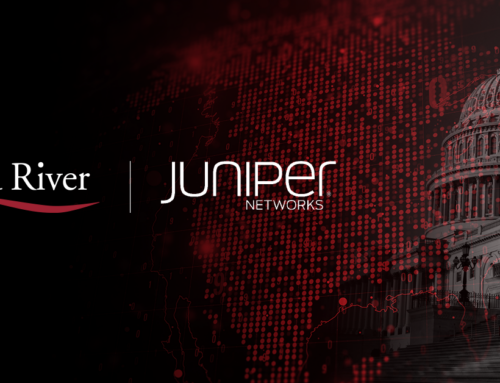
Integrating Microsoft Entra with Azure for Simplified Identity Management
Quick Summary: Integrating Microsoft Entra with Azure centralizes identity management across users, devices, and applications, reducing complexity and risk. This unified framework helps enforce zero trust principles with Microsoft through continuous verification, automation, and policy-driven governance — simplifying access, improving compliance, and strengthening security while optimizing operational efficiency for modern hybrid and cloud environments.
Want to learn more? Read on!
Imagine a scenario where an engineer spins up cloud resources, a contractor receives access for a week — but the service account remains active long after its project ends. These are the kinds of identity blind spots that leave gates unlocked while the lights are still on. Each unmanaged account or unmonitored permission adds complexity that quietly increases cybersecurity risk and drives up operational costs.
Identity management has become mission-critical for today’s enterprises. According to one recent report, 94% of security leaders believe complex identity infrastructure weakens overall security.
Enter Microsoft Entra and Azure identity management as a unified solution. When organizations merge identity governance with their cloud platform, they gain a clear framework for enforcing accountability and consistency across every system. Zero Trust provides the baseline for this framework by requiring verification for every access request and removing implicit trust. It turns identity from an administrative process into the foundation of modern security, one capable of adapting as the organization grows.
Why Simplified Identity Management Matters
Modern environments stretch across on-premises systems, multiple clouds, SaaS platforms and infrastructure-as-code pipelines. In that landscape, identities become central because they are the keys to resources, applications and corporate data. A fragmented identity model means user data and access rules scatter across disconnected systems. The lack of cohesion creates overlapping directories and uneven policy enforcement, leaving service accounts and permissions hidden from view. One trend report shows that 71% of enterprises struggle to apply modern SSO or MFA to legacy applications.
Simplified identity management improves three core dimensions: security, agility and cost. When a single identity platform governs access, you reduce the chance of orphan accounts, enforce consistent controls and shorten onboarding and off-boarding cycles. In contrast, weak or fragmented identity management expands your attack surface, costs you time and invites excessive access — all of which undermine cost efficiency and compliance.
Introducing Microsoft Entra and Azure Identity Management
Microsoft Entra is the identity platform built to serve the cloud-first enterprise. It supports human users, guest identities, service accounts and machine identities. In large Azure environments, identity governance matters as much as resource governance. With Azure identity management tools, you get single sign-on, conditional access, user lifecycle automation and permission auditing all integrated into your cloud operations.
The synergy between Microsoft Entra and Azure means every access request, device posture check and resource deployment can carry identity context and every action trigger policy evaluation. In a Zero Trust Microsoft model, identities are treated as the new perimeter. By aligning identity and cloud platforms, you gain simplified identity workflows, fewer integration points and reduced complexity.
Key Benefits of Integrating Identity with Azure
When Microsoft Entra and Azure identity management serve as a unified foundation, organizations gain:
- Stronger security: A consistent identity model across cloud and on-premises architectures reduces the gaps attackers might exploit.
- Operational speed: Governance workflows become repeatable and automated, so users get appropriate access faster and teams spend less time on manual provisioning.
- Reduced identity sprawl: Centralizing identities means fewer directories, service accounts and legacy systems for IT to maintain.
- Simplified audit and compliance: Because identity events are logged and correlated with cloud activity, you gain clearer traceability across the full lifecycle.
- Cost control: Idle or over-privileged identities are a drag on risk and spending. When identity errors drop, resource waste falls too.
Best Practices for Deploying Microsoft Entra with Azure
Integrating Microsoft Entra with Azure is most effective when identity becomes the foundation for every security and access decision. Treating identity as the control plane helps eliminate silos and reduce unnecessary complexity across the cloud environment. The following best practices can help organizations implement a unified and sustainable approach to identity management:
- Start with identity as the control plane for cloud access. Federate your directories by connecting any separate identity systems, then migrate to Microsoft Entra and use Azure identity management tools to enforce policies across all workloads.
- Review every service account and guest identity. Automate provisioning for temporary users and revoke access when projects complete. Link identity lifecycle actions with Azure resource cleanup to avoid orphaned permissions.
- Use Conditional Access and MFA to enforce identity checks for high-risk operations. Every sign-in, device posture and location should contribute to your access decisions. This approach reduces the risk of identity-based compromise and aligns with Zero Trust Microsoft.
- Audit permissions proactively and frequently. Leverage identity governance tools in Microsoft Entra to track role assignments and audit usage patterns. When deployments tie back to identity events, you can resolve rights creep and remove unnecessary access.
- View identity and cloud resources through a unified lens. Integrate identity logs with Azure monitoring so you see which identities are performing actions, where they are operating and how it all ties to resource usage. That unified visibility simplifies investigation, governance and reporting.
How to Get Started with Microsoft Entra and Azure Identity Management
Building a unified identity foundation takes planning and patience, but the right sequence of steps makes the process manageable. Success comes from starting small, validating progress and expanding controls across the organization. The following actions outline a practical path for deploying Microsoft Entra and Azure identity management in a way that strengthens security without slowing operations.
1. Assess Your Identity Estate
Begin by mapping every identity that connects to your organization — employees, contractors, service accounts and automated applications. Many organizations discover overlapping directories or forgotten credentials during this process. Consider cataloging which systems currently synchronize with Azure and which remain disconnected. Pay close attention to third-party SaaS tools that may have their own user databases, since these often contain duplicates. A complete inventory of identities reveals where policy gaps exist and where future integration will yield the most benefit. This assessment becomes your blueprint for modernization and helps quantify how much unmanaged access exists today.
2. Migrate to Microsoft Entra
Once you understand your identity landscape, the next step is consolidation. Migrate your directories into Microsoft Entra to eliminate redundant systems and centralize control. This unification replaces multiple sign-in processes with a single identity platform. It also simplifies password policies and brings legacy environments under a consistent governance model. After migration, configure Azure identity management to govern access across human and non-human users. Assign owners for service accounts, define expiration dates for temporary credentials and enable automated clean-up for inactive accounts. The goal is a single, authoritative source of identity truth that reduces risk and simplifies administration.
3. Define Identity-Aware Access Policies

Identity-aware access ensures that every authentication event is evaluated based on who the user is and the condition of the device they are using. Use Conditional Access to require additional verification when behavior deviates from normal patterns. Multi-factor authentication (MFA) provides another layer of assurance for sensitive tasks such as administrative logins or remote connections. Enforcing device compliance adds contextual security — if a device falls out of compliance, you can limit or block access until the issue is resolves. Every decision to grant access should consider the risk level at that moment. By embedding these controls into Microsoft Entra, you create adaptive protection that evolves as threats change.
4. Link Identity and Resource Governance
True security depends on linking identity management to resource governance. Each time an identity is created, modified or removed, corresponding resource permissions should change automatically. Azure Policy can enforce those connections so that a user who leaves the company or changes roles loses unnecessary access immediately. This linkage closes a common security gap where former employees or outdated service accounts retain privileges long after they should. Integrating identity lifecycle events with Azure governance also strengthens auditability, since every access right can be traced back to an approved identity event. This level of accountability is vital for meeting compliance requirements and reducing operational risk.
5. Measure and Refine
Continuous measurement ensures that the identity program remains effective as your environment evolves. Track metrics that reflect real-world security and operational health. Examples include the number of orphaned identities, frequency of access-related incidents and ratio of active to inactive service accounts. Use these insights to refine access policies and automation workflows so they stay aligned with current business processes. Automation is particularly valuable here — it enforces policy consistency and reduces manual workload for IT teams. Over time, these adjustments help keep the identity environment efficient, secure and easy to manage.
Following these steps establishes a strong identity foundation that supports both operational efficiency and security compliance. By connecting Microsoft Entra with Azure identity management, organizations gain a single control point for who can access what, when and under what conditions. This unified approach simplifies administration, strengthens trust and positions the organization to extend Zero Trust Microsoft principles across every part of the environment.
Why This Matters for Business
Identity is the gateway to everything in the cloud. When identity management is weak, everything you deploy — users, services, APIs, containers — becomes a potential liability. One recent article revealed that organizations are spending on average 11 person-hours investigating a single identity-based incident. In contrast, when identity is well governed, you gain faster deployment cycles, tighter security, clearer audits and lower surface area for threat actors. In a Zero Trust Microsoft world, identity is more than control: it’s the strategic axis of cloud operations.
Partnering with Red River for Ongoing Optimization
Deploying Microsoft Entra and Azure identity management is only the beginning. The real value comes from maintaining alignment between technology, policy and everyday business operations. Cloud environments evolve constantly as organizations add users, adopt new SaaS tools and expand into additional Azure services. Without consistent monitoring and refinement, even well-designed identity systems can drift from best practice.
Red River helps organizations design, deploy and sustain identity strategies that support long-term growth. Our Microsoft-certified engineers work alongside IT and security teams to ensure that every identity control contributes to both protection and productivity. We configure Microsoft Entra and Azure identity management tools for scalability and compliance, tailoring each implementation to the organization’s structure and risk profile.
Optimization is an ongoing process. Red River conducts scheduled reviews to identify new access requirements, confirm policy enforcement and analyze usage trends. When conditions change — such as a merger, new application rollout or regulatory update — our team adjusts configurations to keep security and governance aligned. We also help organizations take advantage of evolving Microsoft features, from AI-driven access insights to continuous access evaluation, so clients always stay ahead of threats and industry requirements.
Red River’s managed services extend beyond setup. We deliver proactive identity monitoring, policy automation and periodic access certification reviews. These capabilities help clients maintain visibility into who has access to which systems and why. The result is an identity management environment that not only defends against external threats but also supports internal accountability.
With Red River, identity management becomes a living framework that adapts as your organization grows. We help you simplify access, maintain verification and transform Zero Trust principles into measurable operational outcomes.
To learn how Red River can help you configure, deploy and optimize your Microsoft identity environment, contact our team.
Q&A

written by
Corrin Jones
Corrin Jones is the Director of Digital Demand Generation. With over ten years of experience, she specializes in creating content and executing campaigns to drive growth and revenue. Connect with Corrin on LinkedIn.




